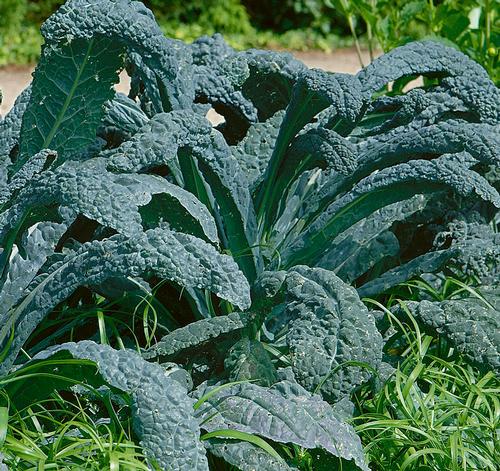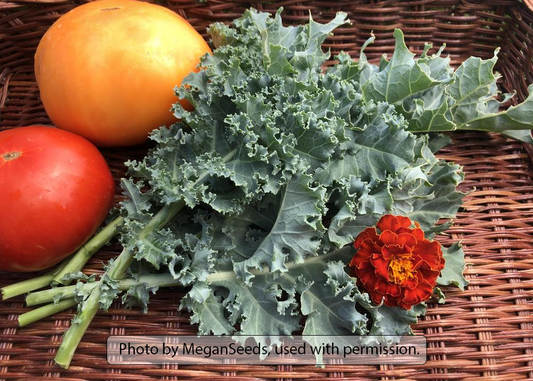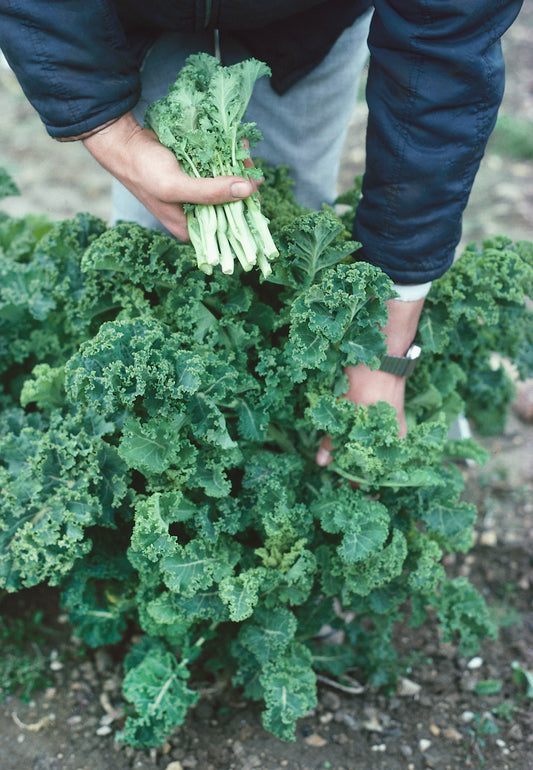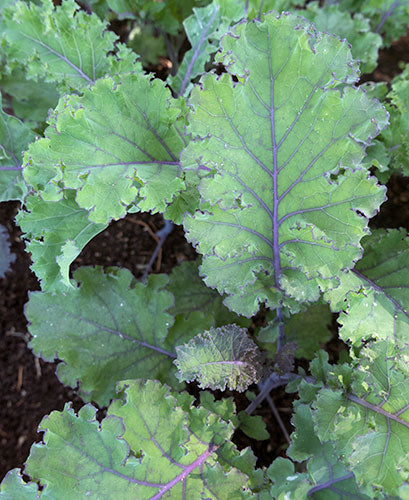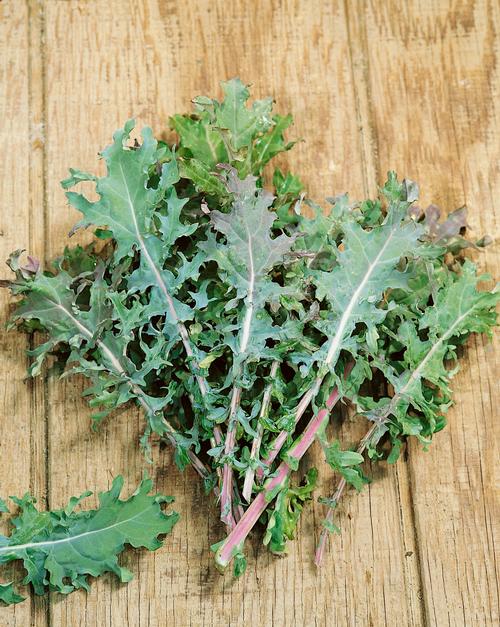-
Lacinato, Black or Dinosaur Kale (Nero Di Toscana)
Regular price From $2.95 USDRegular priceUnit price per -
Dwarf Blue Curled Scotch Kale (Vates)
Regular price From $2.95 USDRegular priceUnit price per -
White Russian Kale
Regular price From $2.95 USDRegular priceUnit price per -
Mesclun Mix
Regular price From $2.95 USDRegular priceUnit price per -
Premier Kale
Regular price From $2.95 USDRegular priceUnit price per -
Scarlet Kale
Regular price From $2.95 USDRegular priceUnit price per -
Red Russian Kale
Regular price From $2.95 USDRegular priceUnit price per -
Ethiopian Kale
Regular price From $2.95 USDRegular priceUnit price per -
Improved Dwarf Siberian Kale
Regular price From $2.95 USDRegular priceUnit price per
Kale is one of the most nutritious leafy greens. One cup of chopped kale contains only 36 calories while providing phytonutrients, 15% of the daily requirement of calcium and vitamin B6, 40% of magnesium, 180% of vitamin A, 200% of vitamin C, and 1,020% of vitamin K. It is also a good source of the trace minerals copper, potassium, iron, manganese, and phosphorus.
Kale's high concentrations of antioxidants (vitamins A, C and K), along with carotenoids (beta-carotene) and flavanoids, make it an excellent source for these reportedly anti-cancer nutrients in ones diet. Click here for more nutritional information. To benefit from the antioxidants and other fragile compounds, eating kale raw or lightly steamed is the best choice. Cooking kale is best for the absorption of the fiber that helps to bind bile acids and to lower blood cholesterol. Kale can be added to stews, soups, casseroles, stir-fry, or substitute in any other dish that calls for spinach or collards.
Looking for a healthy snack food? Try Kale Chips! Start by tearing the leaves into pieces that are about the size of potato chips. Toss them in a bowl with salt, pepper and olive oil until thoroughly coated. Spread them thinly on a cookie sheet, so that they do not bake together, and bake them at 300 to 325F until crisp. This usually take about twenty minutes. You can also experiment with other flavors like soy sauce, wasabi power, chili powder, etc.
Harvest Tips:
• Young and tender leaves are the best.
• As soon as the plants become established and sturdy, begin harvesting the outer leaves as soon as they reach the desired size.
• Do not over-harvest or damage the growing tip. The plant needs leaves to grow!
• Leaves can be continually harvested throughout the growing season until harsh weather kills the plants. In areas with mild climates, production into the winter is possible. More Information:
• Wikipedia article on kale.
• Click here for nutritional information.
Kale's high concentrations of antioxidants (vitamins A, C and K), along with carotenoids (beta-carotene) and flavanoids, make it an excellent source for these reportedly anti-cancer nutrients in ones diet. Click here for more nutritional information. To benefit from the antioxidants and other fragile compounds, eating kale raw or lightly steamed is the best choice. Cooking kale is best for the absorption of the fiber that helps to bind bile acids and to lower blood cholesterol. Kale can be added to stews, soups, casseroles, stir-fry, or substitute in any other dish that calls for spinach or collards.
Looking for a healthy snack food? Try Kale Chips! Start by tearing the leaves into pieces that are about the size of potato chips. Toss them in a bowl with salt, pepper and olive oil until thoroughly coated. Spread them thinly on a cookie sheet, so that they do not bake together, and bake them at 300 to 325F until crisp. This usually take about twenty minutes. You can also experiment with other flavors like soy sauce, wasabi power, chili powder, etc.
Harvest Tips:
• Young and tender leaves are the best.
• As soon as the plants become established and sturdy, begin harvesting the outer leaves as soon as they reach the desired size.
• Do not over-harvest or damage the growing tip. The plant needs leaves to grow!
• Leaves can be continually harvested throughout the growing season until harsh weather kills the plants. In areas with mild climates, production into the winter is possible. More Information:
• Wikipedia article on kale.
• Click here for nutritional information.

